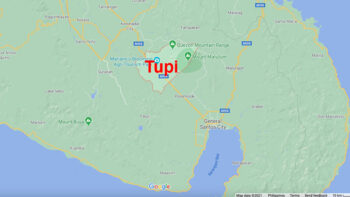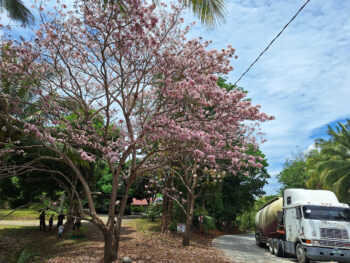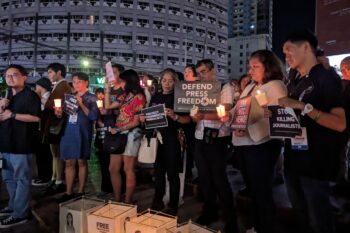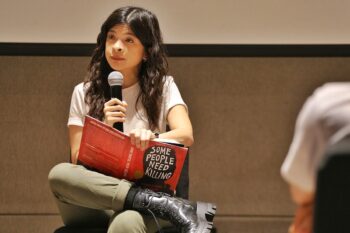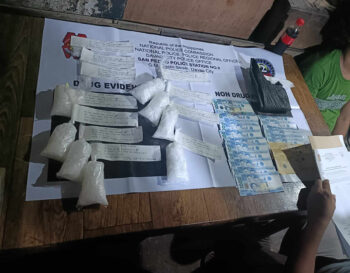Second of three parts
Addressing the Crisis
Right now, the Government is addressing the crisis in Marawi primarily with a military response, with an aid package of P10 billion set aside for the rehabilitation of the city after the fighting ends. This is as it should be. The first order of the day should be to retake the city by neutralizing or driving out the enemy. Following this, essential services will need to be restored, key structures destroyed will need to be rebuilt and the residents of the city should be encouraged to return and rebuild their lives.
In addition, security measures will need to be drawn up to ensure that a repetition of this incident will be avoided in the future. Foremost among these measures, needless to say, would be the strengthening of the intelligence system to enable the authorities to stop dead on its tracks any plans to mount an attack. Admittedly, so-called “lone-wolf” attacks are difficult to anticipate and prevent but surely large-scale operations by terrorists involving several hundred fighters could be detected and blocked before they get too far along!
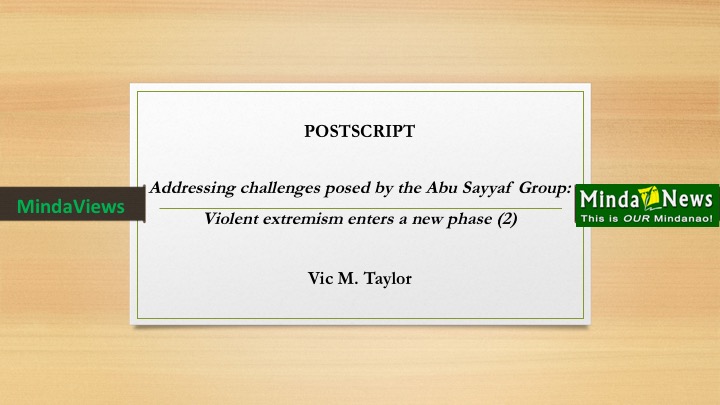 The P10 billion package for the rehabilitation of Marawi is supposed to be covered by an Executive Order which is to be signed by the President. As of the time of this writing, no details of the content of this Executive Order have been provided except for the general statements that the program will be a multi-agency effort, that the Engineering Brigade of the Armed Forces of the Philippines (AFP) will be involved, etc. The President verbally announced that Secretary Jun Evasco will be designated the “Rehab Chief” to coordinate this effort.
The P10 billion package for the rehabilitation of Marawi is supposed to be covered by an Executive Order which is to be signed by the President. As of the time of this writing, no details of the content of this Executive Order have been provided except for the general statements that the program will be a multi-agency effort, that the Engineering Brigade of the Armed Forces of the Philippines (AFP) will be involved, etc. The President verbally announced that Secretary Jun Evasco will be designated the “Rehab Chief” to coordinate this effort.
Multi-Faceted Problem
The ten-part series which this author wrote had a very simple thesis: that any attempt to address situations such as what has occurred in Marawi needs to consider the multi-faceted nature of the problem. While the series focused on the Abu Sayyaf, what was discussed can be said to apply to other extremist groups and the specific contexts within which they operate.
At the risk of stating the obvious, it needs to be recognized that the problem is complex and is rooted in the history of what is now the southern Philippines and the centuries of resistance against outside forces seeking to subjugate the peoples of the region and exploit the resources of the area.
The current situation in the south is also impacted by developments elsewhere in the world, particularly given the fact that in the Muslim consciousness, the Ummah, the Community of Believers, is a lived experience, whereby what impacts Muslims anywhere in the world becomes a matter of concern to Muslims elsewhere. This consciousness is heightened by developments in communications technology which feed information on occurrences in one location in practically real time throughout the world. Unfortunately, these technological developments, which can be instruments to further the progress of the global community can likewise be utilized by those wishing to wreak havoc on people they disagree with.
The series identified the following elements as factors which should be considered in any efforts to try and fashion a long-term program to address violent extremism perpetrated by groups professing the Islamic faith:
- Vestiges of distrust, enmity or even hatred among significant numbers of Muslims and Christians vis-à-vis each other
- Influences which radicalize individuals and even communities, leading a number among these to resort to violent extremism
- Governance systems which are not only unresponsive to the needs of constituents but even exploitative of the powers that are provided within these systems
- Dire social and economic conditions which exist in Muslim communities, in stark contrast to most other areas of the country
- Kidnapping, gunrunning and the trade in illegal drugs, rampant in areas where the Abu Sayyaf operates
- Collusion of members of state security agencies as well as local government officials with Abu Sayyaf bands
To this list could be added other factors, such as clan or blood ties (discussed below) which lend support to the ASG (and other extremist groups) and hinder efforts to put a stop to its activities.
The series also discussed some factors which it is believed would be essential to making any efforts to address the situation effective. These factors were identified as:
- Involving impacted communities in the identification, planning, design and implementation of interventions intended to address the problems in their areas, and
- Getting the religious leaders, the Muftis and Ulama to be proactive in guiding their communities to address the problem of violent extremism in their areas.
In addition, it was suggested that efforts be undertaken to formulate development frameworks based on Islamic principles in order to provide greater meaning and significance to programs which may be introduced and adopted in impacted communities.
Clan Ties
In most developing societies, particularly where the provision of social services and production activities are inadequate, clan ties acquire significant importance. Assistance in planting and harvesting activities is one way in which clan members – more often than not neighbors – help each other out. Governance of these societies is for the most part determined by clan ties and alliances among clans, in accordance with the accepted ways by which leadership is determined. In the areas of conflict, the contribution of men, arms and ammunition is the principal way by which justice is obtained when a member of the clan has been harmed or has suffered a public indignity which cannot be left unanswered.
The late Tausug anthropologist Alber Husin explained this phenomenon of clan support during times of conflict very graphically when he described the cycle of revenge that existed between his clan and another one, a member of which had killed his grandfather. After describing how two of his cousins had taken revenge by killing the brother of the assailant of their grandfather, Husin wrote:
“Beyond reciprocity, the revenge marked the leveling of the field between our clan and the Unogs. Although we were never known for being involved in such armed conflicts, it was through this act of revenge that we were able to make known that we weren’t walking away when conflict was brought upon us. It also made the Unogs realize that we were capable of inflicting as much damage as they could. Great tension in Jolo was generated resulting from this, particularly in the village where most of our relatives and theirs have tried to co-exist for years. But, being aware of each other’s capabilities made both clans cautious. With ‘armalites’ on hand, respect for each other allowed for a vigilant yet peaceful co-existence between our clans. We were also aware that it was their turn to get back for the lives of two men from their family. With this knowledge, we were always cautious and did not take chances with our security. Amah remained in Zamboanga most of the time and would only visit Jolo if necessary.” (Alber Husin, “ ‘Kalis and Armalite’: Symbols of Weapons and Meanings of Violence in Tausug Society”.)
Husin elaborated on this in talking about his arming himself while he was doing fieldwork in Sulu:
“…in a society where law and order as we know it in more developed cities are close to non-existent, the use of the ‘armalite’ remains indispensable. Legal courts and law enforcers are rarely considered when lives and honor are at stake. In my stay in both coastal and inland communities in Luuk, Sulu, I saw and felt the need to keep arms, not because my family had blood feuds, but more because I did not feel the presence of any form of state apparatus that could ensure my safety and security. It was not even a question of which armed groups were in control of an area, but it was more about anybody with arms could possibly harm one’s person.
“Although one might think that keeping or carrying arms could attract trouble and even danger, however, I also believe that there is less possibility that parties to a conflict would engage each other on equal strength or firepower. ‘The capacity to strike back has become the best guarantee of security’ (Gutierrez 2004:23). There is paghallih or caution when both groups are aware of each other’s capacity to retaliate. But the moment disequilibrium of power emerges a corresponding high probability of armed encounter arises. Hence, the connections between arms, security, and ‘peace’ are established.”
Torres made the same point as Husin about clans or kinship ties filling in the gap where State interventions in providing security and justice are inadequate or even absent:
“Revenge killings and feuds are typical in small-scale societies where family and kinship ties are the main sources of authority and where there is lack of effective state control and authority. In such societies where the state is weak, decision-making and enforcement become more decentralized and the provision of security is based mainly on self-help….Under such circumstances, the distribution of responsibility and capacity for the provision of security are more likely to be organized along the lines of kinship.” (Wilfredo Magno Torres III (ed), “Rido: Clan Feuding and Conflict Management in Mindanao”.)
Clan ties and alliances are at the heart of all concerns in these societies. The strength of the political dynasties by definition depends on this coupled with the practice of reciprocity. Torres elaborates on this latter concept:
“Among the Tausug, Kiefer observes that reciprocity is the essence of friendship and thus, reciprocal gift-giving through commodities, services, and sentiments is pervasive in Tausug social organization. He adds that a type of reciprocity called buddi (debt of gratitude) is usually created in a person who has received a great favor and consequently feels a strong moral obligation to do something in turn for his friend.”
Politicians thus use a combination of clan ties, buddi (for past favors done) and promises/bargainings on future favors to be delivered to try and obtain or reinforce their positions of power in their communities.
The various ASG bands are centered around clan or kinship ties as well. Thus, for example, Puruji Indama is said to have family ties with many of the ASG Basilan fighters and is thus considered a key personality in the group. As a result, the Institute for Policy Analysis of Conflict (IPAC) has concluded that “the death or defection of Furuji would seriously weaken the Basilan contingent”. (Institute for Policy Analysis of Conflict, “Pro-ISIS Groups in Mindanao and their Links to Indonesia and Malaysia.”) It is said that Radulan Sahiron does not allow any outsiders into his group of fighters and that they are all related by blood or affinity. The group of Hatib Hajan Sawadjaan, which has been responsible for some of the horrific beheadings, is likewise made up of close relatives. The sub-leaders under Hatib Hajan, Almunjir Yadah and his half-brother Ben Tatuh – the actual executioner of the Canadians John Ridsdel and Robert Hall — are Hatib Hajan’s nephews. And so on and so forth. This is to be expected since in matters of life and death, who would you trust more than your close relations?
A contributory factor as well in fueling hatred among the ASG bands is the matter of revenge killings which, as noted earlier, is practised widely in these areas of conflict as a way of enhancing security and obtaining justice. Many among the younger ASG fighters, like the anak ilu (orphans of ASG or Moro National Libration Front fighters), are motivated by the desire to exact vengeance for the killing of their parents. Hence, the continued military operations, resulting in more deaths among ASG leaders and members, unfortunately fuels this desire for vengeance among the relatives of those killed, particularly among the young males, thus leading to an endless cycle of violence.
The communities where the ASG bands are based are more often than not made up of blood relations of the band leaders, and as a general rule can expect to share in the “rewards” that are extracted from kidnapping and other activities.
Hence, clan ties are important in trying to understand the dynamics that exist not just within the various ASG bands but also in the wider communities within which they operate. These ties need to be considered in any programs intended to effect a transformation in the areas of conflict.
Last part tomorrow: Are Negotiations Possible…Or Even Desireable?
[Vic M. Taylor, originally from Cebu, has been involved in various peace and development activities in Mindanao, particularly in Basilan-Sulu-Tawi-Tawi (BaSulTa) in the different positions he has held in government and the private sector over the last 50 years.
He started as an instructor at the Notre Dame of Jolo College after his graduation from the Ateneo de Manila University in the late 1960s. Subsequently, he oversaw the Rehabilitation and Development Program for Muslim Mindanao during the early years of martial law under the Office of the President.
Within the last 16 years and upon the request of the families of some kidnap victims, Mr. Taylor assisted these families to help secure the safe release of five victims from the ASG.Recently, he has been working with a private group that is assisting a community of the Moro National Liberation Front in the Zamboanga peninsula in bringing development projects to their area]

